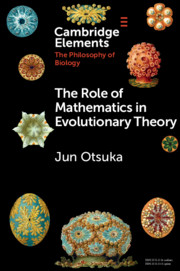Element contents
The Role of Mathematics in Evolutionary Theory
Published online by Cambridge University Press: 05 February 2020
Summary
- Type
- Element
- Information
- Online ISBN: 9781108672115Publisher: Cambridge University PressPrint publication: 17 October 2019
References
- 20
- Cited by

